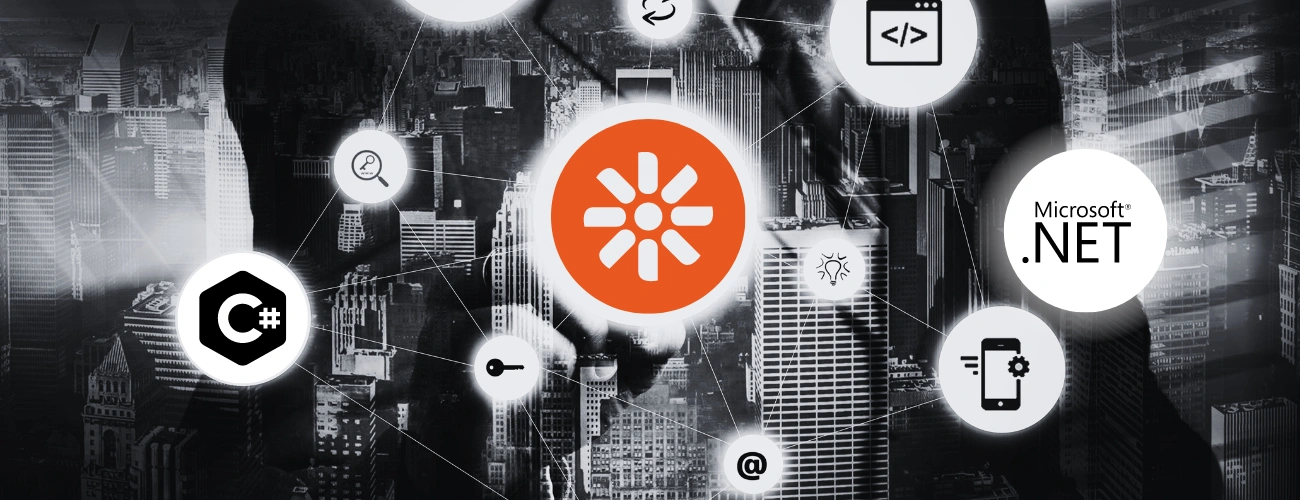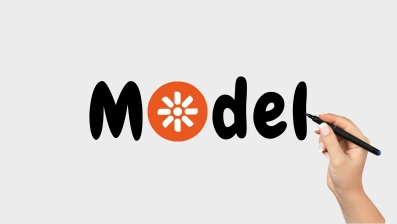Are you looking to build a powerful, dynamic website that not only meets your business needs but also provides an incredible user experience?
If so, then Kentico is the platform for you.
In the fast-paced digital world, having a robust, flexible, and scalable website is crucial, and Kentico ticks all these boxes.
This blog will take you through everything you need to know about using Kentico for web development—from what it is, why it’s a top choice, to how you can leverage its features to create an exceptional website.
What is Kentico?
So, what exactly is Kentico?
If you’re in the business of building or managing websites, you’ve probably heard the name. But let’s break it down a bit.
Kentico is a comprehensive digital experience platform (DXP) that combines content management, digital marketing, and eCommerce capabilities all in one. Think of it as the Swiss Army knife of web development tools—versatile, powerful, and ready to handle whatever you throw at it.
Kentico started as a robust Content Management System (CMS), but over the years, it has evolved into a full-fledged DXP, making it a go-to choice for businesses looking to create a seamless and engaging online presence. Whether you’re aiming to build a content-heavy blog, an eCommerce store, or a corporate website, Kentico offers the tools and flexibility you need to get the job done.
What sets Kentico web development apart is its ability to integrate marketing automation, personalization, and analytics directly into your website. This means you can manage your content and also tailor the user experience, track performance, and adjust your strategy—all from a single platform.
DotStark leverages these powerful features of Kentico to create websites that are not only visually stunning but also packed with functionality to help you achieve your business goals.
Why Choose Kentico for Web Development?
Choosing a DXP can be difficult.
When it comes to choosing the right platform for your website, Kentico stands out for several compelling reasons.
Let’s explore why Kentico is an excellent choice for your web development needs. Benefits of Kentico are, as mentioned below:
Flexibility and Customization
One of the biggest strengths of Kentico is its unparalleled flexibility. Whether you’re building a small business site, a large-scale enterprise portal, or an eCommerce platform, Kentico adapts to your needs. The platform allows you to fully customize your website, from design and layout to functionality and user experience. You’re not locked into rigid templates or limited by out-of-the-box solutions. Instead, Kentico lets you create a website that’s truly unique and tailored to your brand’s identity.
With Kentico CMS development, you can easily integrate third-party applications, customize workflows, and build custom modules to meet specific business requirements. This flexibility ensures that your website can grow and evolve alongside your business, adapting to new trends and technologies without needing a complete overhaul.
Comprehensive Digital Marketing Tools
Another reason to choose Kentico for web development is its built-in digital marketing capabilities. In today’s competitive landscape, a website is more than just an online brochure—it’s a critical part of your marketing strategy. Kentico comes with a suite of marketing tools that allow you to run campaigns, track customer behavior, and personalize the user experience all within the same platform.
You can automate your marketing efforts with workflows, manage email campaigns, and even use advanced analytics to gain insights into how your content is performing. The platform’s integrated marketing tools mean you don’t need to juggle multiple software solutions, making your marketing efforts more efficient and effective.
Scalability and Performance
As your business grows, so should your website. Kentico is built to scale, handling everything from small websites to large, complex enterprise solutions with ease. The platform is designed for high performance, ensuring fast load times and smooth user experiences, even under heavy traffic.
What’s more, Kentico supports multisite management, allowing you to run multiple websites from a single platform. This is particularly useful for businesses with a global presence or those looking to expand their online footprint. The platform’s scalability ensures that no matter how big your business gets, your website will be able to keep up.
Security and Compliance
In today’s digital age, security is a top concern for any business. Kentico takes security seriously, offering features like advanced authentication, user permissions, and activity logging. The platform is also compliant with major regulations such as GDPR, ensuring that your website meets the necessary legal requirements.
Kentico web development also includes regular updates and patches, so your website remains protected against the latest threats. Whether you’re handling sensitive customer data or simply want to ensure your site is secure, Kentico provides the peace of mind you need.
Multilingual and Multisite Support
For businesses operating in multiple regions or targeting a global audience, Kentico offers robust multilingual and multisite support. You can easily manage content in different languages, ensuring that your website speaks to your audience no matter where they are.
The platform also allows you to manage multiple websites from a single interface, making it easier to maintain consistency across your brand while catering to different markets. This feature is particularly valuable for international businesses looking to streamline their web operations.
Key Features of Kentico for Web Development
Kentico comes packed with a variety of features designed to empower your web development process.
These features not only streamline the creation of your website but also enhance its functionality, ensuring it meets the needs of both your business and your users.
Let’s dive into the key features that make Kentico web development a standout choice.
Content Management System (CMS) Capabilities
At its core, Kentico is a powerful Content Management System (CMS). It provides a user-friendly interface that allows you to manage your website’s content with ease. Whether you need to update blog posts, add new product pages, or manage multimedia content, Kentico’s CMS makes it simple and intuitive.
One of the standout features is its WYSIWYG (What You See Is What You Get) editor, which allows you to create and edit content directly on the page. This means you can see exactly how your content will look once it’s published, saving time and reducing errors. The CMS also supports versioning and workflows, so you can manage content approvals and track changes, ensuring consistency and quality across your site.
Integrated Marketing Tools
Kentico isn’t just about content—it’s also about driving results. The platform includes a suite of integrated marketing tools that help you engage with your audience and measure the success of your campaigns. From email marketing to lead scoring and A/B testing, Kentico provides everything you need to run effective marketing campaigns directly from your website.
One of the key features is personalization, which allows you to tailor content and offers to individual users based on their behavior, preferences, or demographic information. This level of personalization can significantly increase engagement and conversion rates, making your website not just a static page, but an interactive experience tailored to each visitor.
E-commerce Integration
For businesses looking to sell products or services online, Kentico offers robust e-commerce integration. The platform allows you to set up an online store quickly, complete with product catalogs, shopping carts, and payment gateways. You can manage orders, track inventory, and even run promotions—all from within the Kentico platform.
What’s more, Kentico’s e-commerce features are fully integrated with its marketing tools, so you can easily create personalized shopping experiences, run targeted promotions, and analyze sales performance. This makes Kentico an excellent choice for businesses looking to build a powerful e-commerce website.
Multi-Channel Delivery
In today’s digital world, it’s essential to reach your audience wherever they are—whether that’s on a desktop, mobile device, or social media platform. Kentico’s multi-channel delivery capabilities ensure that your content is optimized and delivered across all channels, providing a consistent user experience no matter how your audience accesses your site.
The platform supports responsive design out of the box, ensuring that your website looks great and functions smoothly on any device. Additionally, Kentico allows you to manage content across multiple channels from a single interface, simplifying the process of keeping your messaging consistent and up to date.
Security and Compliance Features
Security is a critical concern for any website, and Kentico takes it seriously. The platform includes advanced security features such as role-based access controls, SSL encryption, and activity logging to help protect your site from threats. Kentico is also compliant with major regulations like GDPR, which is essential for businesses operating in regulated industries or handling sensitive customer data.
Regular updates and security patches ensure that your website remains secure against the latest vulnerabilities. With Kentico, you can be confident that your website not only delivers a great user experience but also meets the highest standards of security and compliance.
Customizable Workflows
Managing a website often involves multiple stakeholders and processes, and Kentico’s customizable workflows help keep everything on track. You can define workflows for content creation, review, and approval, ensuring that every piece of content goes through the necessary checks before it’s published.
Workflows can be as simple or complex as needed, with options to automate tasks, set deadlines, and assign roles. This feature is particularly useful for large organizations or teams that need to collaborate on content while maintaining control over quality and consistency.
Multilingual and Multisite Support
Kentico is built with global businesses in mind, offering comprehensive multilingual and multisite support. You can easily create and manage content in multiple languages, ensuring your website resonates with a global audience. The platform also allows you to run multiple websites from a single installation, making it easier to maintain a consistent brand presence across different markets.
This feature is invaluable for businesses looking to expand their reach, as it simplifies the process of managing multiple sites and languages, all while maintaining centralized control over your content and marketing efforts.
Steps to Develop a Website with Kentico
Building a website with Kentico is a structured yet flexible process.
Whether you’re a small business or a large enterprise, following these steps will ensure a successful and efficient web development project.
Let’s break down the key phases of Kentico web development:
Step 1: Planning and Strategy
Every great website starts with a solid plan. This is where you define your project’s goals, target audience, and key functionalities. Are you looking to drive more leads, provide information, or sell products? Knowing your objectives upfront will guide the entire development process.
During this phase, you’ll also want to outline your content strategy. What kind of content will you produce? How will it be structured? Defining these elements early on will make the subsequent steps smoother. Additionally, it’s important to discuss any third-party integrations, custom modules, or unique features you may need to achieve your business goals.
Step 2: Design and Architecture
Once the planning is complete, it’s time to move on to design and architecture. This is where the look and feel of your website come to life. Kentico supports both custom designs and pre-built templates, allowing you to choose the approach that best fits your brand.
During this stage, you’ll work on the user interface (UI) and user experience (UX) design. This involves creating wireframes and mockups that visualize the website’s layout, navigation, and overall design. It’s crucial to focus on creating a seamless user experience, ensuring that your visitors can easily find what they’re looking for and engage with your content.
You’ll also define the website’s architecture—how the content is organized and how different sections of the site are connected. This ensures that your website is not only visually appealing but also logically structured for both users and search engines.
Step 3: Development and Customization
With the design and architecture in place, the next step is development. This is where the magic happens—your website’s design is transformed into a fully functional, dynamic site using Kentico’s development tools.
During this phase, developers will build the site’s front-end and back-end, integrating all the necessary features and functionalities. If you need custom modules, such as specific content types or interactive elements, this is when they’ll be developed and integrated into the site.
Kentico’s flexibility allows for extensive customization, so your website can have unique features that set it apart from the competition. Whether you’re integrating with third-party APIs, creating custom workflows, or building specialized content types, Kentico development provides the tools you need to bring your vision to life.
Step 4: Testing and Quality Assurance
Once the development phase is complete, it’s time to put your website through rigorous testing. This is a crucial step to ensure that everything works as expected and that there are no bugs or issues that could affect the user experience.
Testing should cover all aspects of the website, including functionality, performance, and security. Make sure to test your site on different devices and browsers to ensure it’s fully responsive and accessible to all users. Additionally, run performance tests to make sure the site loads quickly and handles traffic efficiently.
Quality assurance also involves checking for any SEO issues, ensuring that your website is optimized for search engines right from the start. This includes reviewing meta tags, URL structures, and content quality to ensure your site is SEO-friendly.
Step 5: Deployment and Go-Live
After testing and fine-tuning your website, it’s time for the big moment—deployment. This is when your website goes live and becomes accessible to the world. Kentico makes the deployment process straightforward, whether you’re launching on a single server or deploying to a cloud environment.
During this phase, ensure that everything is set up correctly on your hosting environment and that all configurations, such as SSL certificates and DNS settings, are properly in place. Once everything is ready, hit that launch button and watch your website go live!
Even after launch, it’s important to monitor the site closely to ensure everything is running smoothly. Be prepared to make any necessary adjustments in the early days post-launch.
Step 6: Post-Launch and Maintenance
Your website is live, but the work doesn’t stop there. Ongoing maintenance is key to ensuring your site remains secure, up-to-date, and performing at its best. This includes regular updates to Kentico, as well as any third-party integrations you’ve used.
Post-launch is also the time to review your site’s analytics to see how users are interacting with it. Use this data to make informed decisions about future updates, content strategies, and marketing efforts. Regularly adding fresh content and making improvements based on user feedback will keep your website relevant and engaging.
Cost to Develop a Website with Kentico
When considering the Kentico development cost, it’s important to understand that the price can vary widely depending on your project’s complexity, the features you need, and the level of customization required. However, to give you a ballpark figure, Kentico web development can range anywhere from $20,000 to $150,000 or more.
For a basic website with standard features like a CMS, blog, and basic marketing tools, you might be looking at the lower end of the spectrum, around $20,000 to $40,000. This includes essential design, development, and deployment services.
If your project requires more advanced features—such as eCommerce integration, custom modules, or complex workflows—the cost can rise to $50,000 to $80,000. This also typically includes more detailed planning, extensive customization, and additional testing phases.
For enterprise-level websites with extensive customization, multilingual support, advanced security features, and integrations with other systems, costs can exceed $100,000. These projects involve detailed strategy sessions, custom development, rigorous testing, and long-term maintenance plans.
Here’s a quick breakdown:
Project Type | Estimated Cost |
Basic Website | $20,000 - $40,000 |
Advanced Website | $50,000 - $80,000 |
Enterprise-Level Website | $100,000 - $150,000+ |
While these figures provide a general idea, the actual cost will depend on your specific needs and objectives. Investing in a Kentico website is investing in a robust, scalable, and future-proof platform that can grow with your business.
Best Practices for Kentico Web Development
To get the most out of your Kentico web development project, it’s essential to follow best practices that ensure your website is not only functional but also optimized for performance, security, and user experience. Here are some key best practices to keep in mind:
1. Optimize for Performance
Performance is critical for user satisfaction and SEO. Slow-loading websites can drive users away and negatively impact your search engine rankings. To ensure your Kentico website performs at its best, focus on:
- Caching: Utilize Kentico’s built-in caching features to reduce load times and improve server performance.
- Image Optimization: Compress images without sacrificing quality to speed up page loading times.
- Minification: Minify CSS, JavaScript, and HTML files to reduce file sizes and improve load speeds.
2. Prioritize Security
Security should always be a top priority, especially if your website handles sensitive data. Kentico offers a range of security features, but it’s crucial to implement them correctly:
- SSL/TLS Encryption: Ensure that your website uses SSL/TLS encryption to protect data in transit.
- Role-Based Access Controls: Use Kentico’s role-based access controls to manage who can access and modify different parts of your website.
- Regular Updates: Keep your Kentico platform and all plugins updated to protect against the latest vulnerabilities.
3. Leverage SEO Features
Kentico provides robust SEO tools, but they need to be used effectively to maximize your site’s visibility:
- Meta Tags: Ensure every page has unique and optimized meta titles and descriptions.
- Friendly URLs: Use Kentico’s URL rewriting features to create clean, keyword-rich URLs.
- Content Structure: Organize your content with clear headings and subheadings, and make sure your site has a logical hierarchy.
4. Focus on User Experience (UX)
A great user experience keeps visitors engaged and encourages conversions. Consider these UX best practices:
- Responsive Design: Ensure your website is fully responsive, providing a seamless experience across all devices.
- Intuitive Navigation: Design your website with intuitive navigation that allows users to find what they need quickly and easily.
- Accessibility: Follow web accessibility guidelines to ensure your website is usable by everyone, including those with disabilities.
5. Maintain Regular Content Updates
Keeping your website content fresh and relevant is crucial for both user engagement and SEO. Make it a habit to:
- Update Blog Posts: Regularly add new blog posts or update existing ones to keep your content current.
- Review and Refresh Content: Periodically review all site content to ensure it’s up-to-date and aligned with your business goals.
- Monitor Analytics: Use Kentico’s analytics tools to track content performance and make data-driven decisions.
6. Plan for Scalability
Your website should be built with the future in mind. Ensure it can grow alongside your business by:
- Modular Design: Develop your website in a modular way, allowing new features and content types to be added without disrupting existing functionality.
- Load Testing: Perform load testing to understand how your website handles increased traffic and plan accordingly.
- Scalable Hosting: Choose a hosting solution that can easily scale as your website traffic and resource needs grow.
Challenges and Solutions in Kentico Web Development
Even with a robust platform like Kentico, web development projects can encounter challenges. Understanding these potential hurdles and knowing how to address them will help ensure a smoother development process. Here are some common challenges in Kentico web development and practical solutions to overcome them:
1. Complex Customization Requirements
Challenge: Kentico’s flexibility is one of its greatest strengths, but it can also lead to complexity, especially when a project requires extensive customization. Custom modules, unique content types, and specific workflows can add layers of complexity to the development process.
Solution: Start with a clear and detailed specification of your requirements. Break down the customization needs into manageable parts and tackle them one at a time. Use Kentico’s modular approach to build custom features, and leverage the platform’s extensive documentation and community support to find solutions to specific customization challenges.
2. Performance Optimization
Challenge: As your website grows in content and functionality, maintaining optimal performance can become difficult. High traffic volumes, large media files, and complex queries can slow down your website, affecting user experience and SEO.
Solution: Implement performance best practices from the start, such as caching, image optimization, and code minification. Regularly monitor your website’s performance using Kentico’s built-in analytics and third-party tools. Consider using a Content Delivery Network (CDN) to improve load times for global users, and optimize your database queries to reduce server load.
3. Managing Multiple Languages and Sites
Challenge: Kentico’s support for multilingual and multisite management is powerful, but it can be challenging to maintain consistency and quality across multiple languages and sites. Content synchronization and translation management can become complex as the number of languages or sites increases.
Solution: Use Kentico’s localization tools effectively to manage translations and ensure content is consistent across languages. Establish clear workflows for content creation, translation, and approval to maintain quality. Regularly review all localized content to ensure accuracy and relevance. For multisite management, utilize Kentico’s centralized management tools to maintain consistency across different sites while allowing for regional customization.
4. Security Concerns
Challenge: As with any web platform, security is a significant concern, particularly if your website handles sensitive data or financial transactions. Ensuring your site is secure against threats is critical.
Solution: Follow Kentico’s security best practices, including enabling SSL, setting up role-based access controls, and regularly updating your Kentico installation and plugins. Conduct regular security audits and vulnerability assessments to identify and address potential threats. Educate your team on best practices for maintaining security, such as using strong passwords and secure coding practices.
5. Keeping Up with Platform Updates
Challenge: Kentico, like any other platform, regularly releases updates and new versions. While these updates bring new features and security enhancements, they can also disrupt your existing setup if not managed correctly.
Solution: Plan for regular maintenance windows to implement updates without affecting your website’s availability. Before applying any updates, test them in a staging environment to identify any potential issues. Keep your development team informed about upcoming updates and changes in Kentico to prepare for smooth transitions. Consider using Kentico’s support services or consulting with experts to manage complex updates.
6. Content Migration
Challenge: If you’re moving to Kentico from another CMS or if you need to migrate a large amount of content within Kentico, the migration process can be complex and time-consuming.
Solution: Plan your content migration carefully. Start by auditing your existing content to determine what needs to be migrated, updated, or discarded. Use Kentico’s import/export tools and APIs to facilitate the migration process. Consider migrating content in phases to reduce the risk of errors and downtime. Ensure thorough testing of the migrated content to verify accuracy and functionality.
Why DotStark for Kentico Web Development?
When it comes to Kentico web development, experience and expertise make all the difference.
At DotStark, we are a leading Kentico development company with a proven track record of delivering high-quality, customized solutions that meet the unique needs of our clients.
Our team of Kentico experts is well-versed in all aspects of the platform, from CMS and eCommerce integration to advanced digital marketing features.
We work closely with you throughout the entire development process, ensuring that your website not only looks great but also performs optimally. Whether you need a simple site or a complex enterprise-level solution, DotStark has the skills and experience to bring your vision to life.
Conclusion
Building a website with Kentico is a smart choice for businesses looking for a powerful, flexible, and scalable solution. From its robust CMS capabilities and integrated marketing tools to its advanced security features and multilingual support, Kentico offers everything you need to create a dynamic online presence that grows with your business.
By following best practices and being aware of potential challenges, you can ensure that your Kentico web development project is a success. Whether you're starting from scratch or looking to enhance your existing site, Kentico provides the tools and flexibility to meet your needs.
Frequently Asked Questions
Kentico is a comprehensive digital experience platform (DXP) that combines content management, digital marketing, and eCommerce capabilities. It’s a versatile platform ideal for building dynamic and scalable websites.
The cost of developing a website with Kentico can range from $20,000 to $150,000 or more, depending on the complexity and customization required. Basic sites may cost less, while enterprise-level projects with extensive features will be on the higher end.
Kentico offers flexibility, scalability, and a wide range of built-in tools for content management, marketing, and eCommerce. It’s an excellent choice for businesses looking for a powerful and customizable platform that can grow with them.
The development timeline can vary based on the project’s scope and complexity. On average, a Kentico website might take anywhere from a few weeks for a basic site to several months for a complex, fully customized solution.
Kentico’s key features include a robust CMS, integrated digital marketing tools, eCommerce capabilities, multi-channel delivery, advanced security, and multilingual and multisite support.
Yes, Kentico is suitable for businesses of all sizes. It’s flexible enough to handle the needs of small businesses while being scalable enough to support large enterprises.










 +91 9680599916
+91 9680599916
 vanshika@dotstark.com
vanshika@dotstark.com
